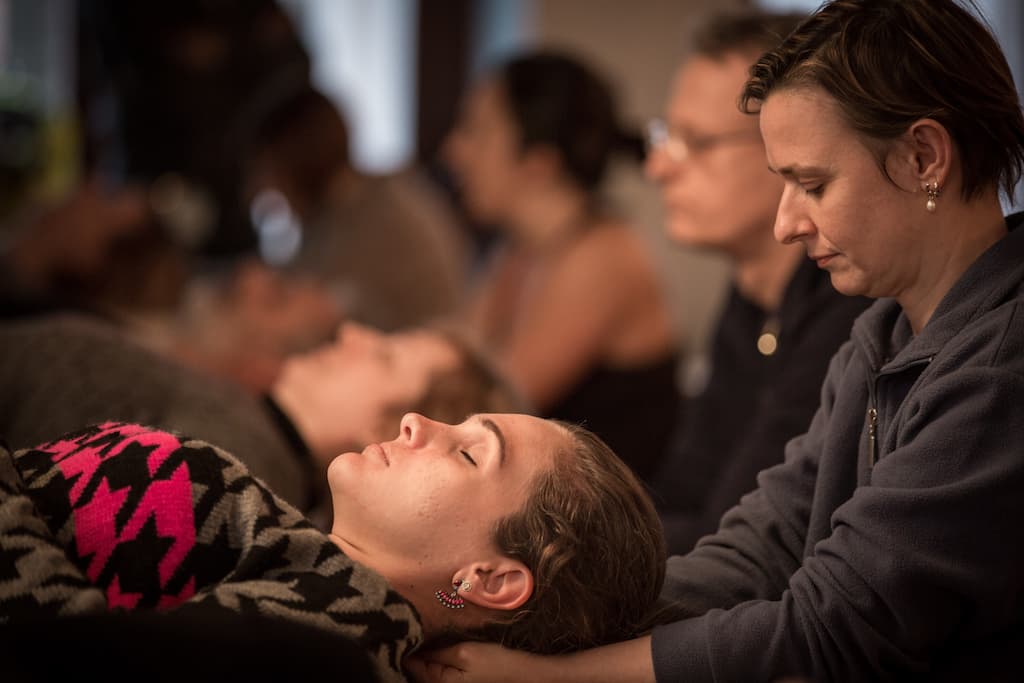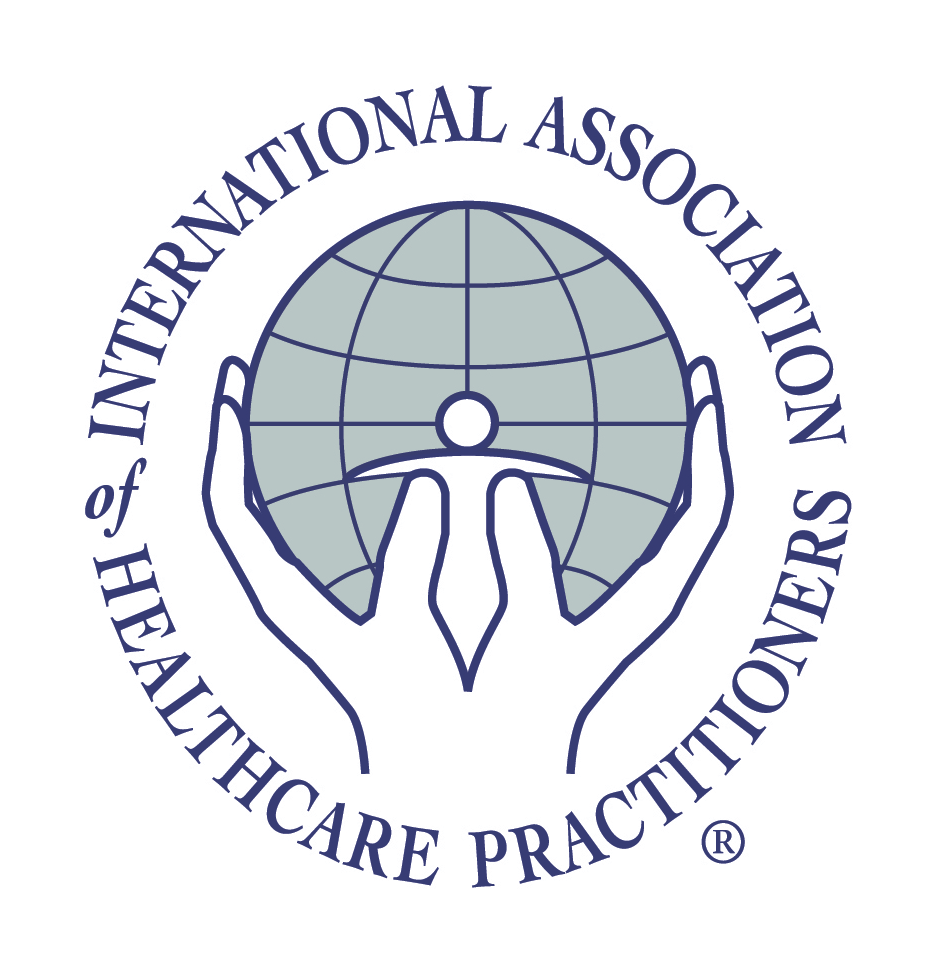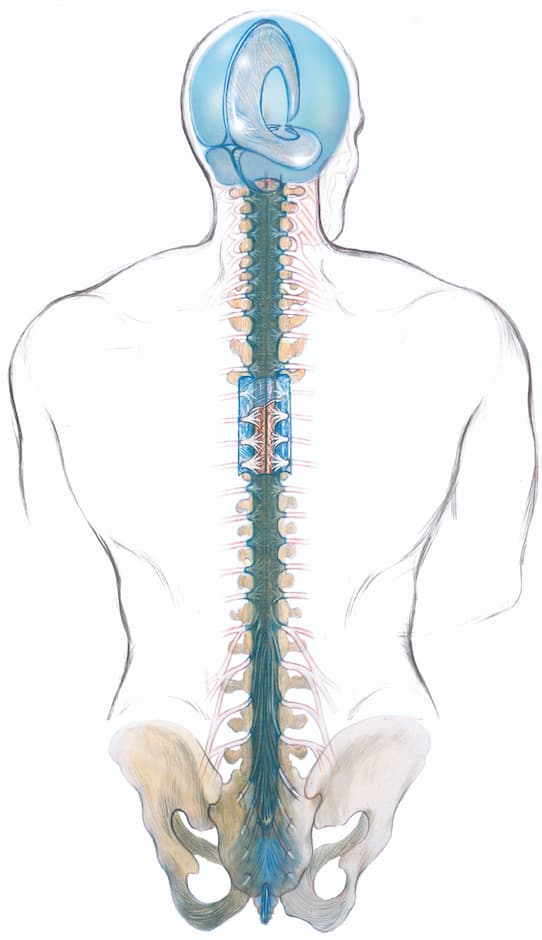
CranioSacral Therapy (CST) was pioneered and developed by osteopathic physician John E. Upledger following extensive scientific studies from 1975 to 1983 at Michigan State University, where he served as a clinical researcher and Professor of Biomechanics.
CranioSacral Therapy (CST) is a gentle, hands-on method of evaluating and enhancing the functioning of a physiological body system called the craniosacral system - comprised of the membranes and cerebrospinal fluid that surround and protect the brain and spinal cord. Using a soft touch generally no greater than 5 grams, or about the weight of a nickel, practitioners release restrictions in the craniosacral system, which has been shown to improve the functioning of the central nervous system, as well as many other systems of the body, such as digestive, musculoskeletal, respiratory, circulatory, and more. CST has also been shown to help with the physical components related to such somatic conditions as Post Traumatic Stress, depression and anxiety.
By facilitating the body's natural and innate healing processes, CST is increasingly used as a preventive health measure for its ability to bolster resistance to disease, and has been shown to be beneficial for people seeking help with a wide range of healthcare challenges and symptoms including:
- Migraines, Headaches
- Chronic Pain
- Motor-Coordination Impairments
- Central Nervous System Disorders
- Orthopedic Problems
- Traumatic Brain Injuries and Concussions
- Alzheimer's
- Spinal Cord Injuries
- Scoliosis
- Conception, Pregnancy, Birth
- Pediatric Challenges
- Learning Differences, ADD, ADHD
- Autism and Sensory Processing
- Chronic Fatigue
- Emotional Difficulties, Depression
- Stress and Tension-Related Problems
- Fibromyalgia and other Connective-Tissue Disorders
- Temporomandibular Joint Syndrome (TMJ) and Dental Challenges
- Immune Disorders
- Post-Traumatic Stress Disorder
- Post-Surgical Dysfunction
- Sleep Challenges
SomatoEmotional Release™ (SER) is a therapeutic process that uses and expands on the principles of CST to help a person rid their body of the residual effects of past injuries and negative experiences. SER is based on university research conducted by osteopathic physician John E. Upledger and biophysicist Zvi Karni. Physical forces enter a person's body at the time of an accident or injury. The injured body may immediately begin dissipating these forces and the natural healing process will follow, or the physical forces imposed upon the person's body may be retained rather than dissipated. Drs. Upledger and Karni came to realize that very often the body retained the emotional energy along with the physical force, and called this localized and concentrated area that formed, an "energy cyst." Initially the body accommodates to the presence of the energy cyst, but over time the body weakens or tires of this accommodation, and can develop symptoms of pain, dysfunction, or emotional stress.
SER facilitates a gentle process for releasing tissue memory, thereby helping the person to decrease the adverse effects of past traumas. There is vast research to show that a change in physical health is accompanied by a change in mental health, and it is equally documented that the reverse is apparent. SER is a holistic mind-body somatic approach that may also assist a person in gaining insight as to how that held trauma is influencing their physical and emotional health. SER can support the person transition from dysfunction and unresolved issues towards wellness and optimal function.
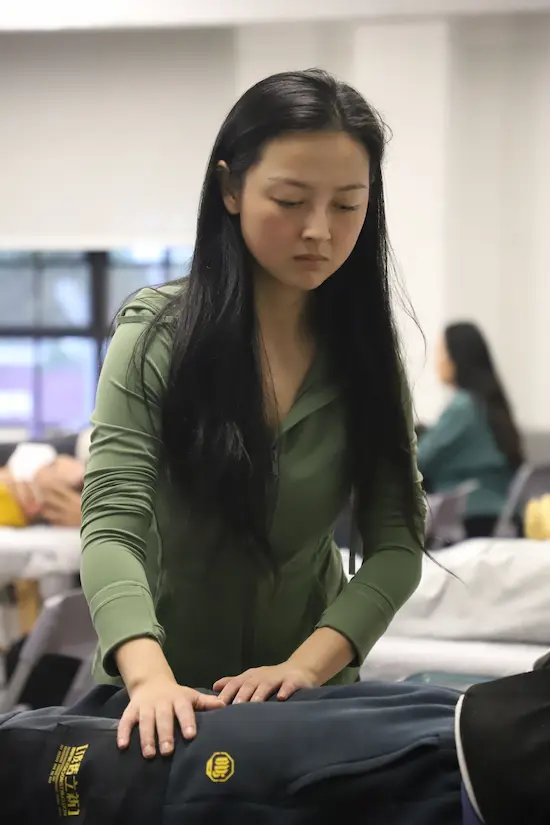
Frequently Asked Questions
CranioSacral Therapy (CST) is a gentle, hands-on approach that releases tensions deep in the body to relieve pain and dysfunction and improve whole-body health and performance. It was pioneered and developed by Osteopathic Physician John E. Upledger after years of clinical testing and research at Michigan State University where he served as professor of biomechanics.
Using a soft touch which is generally no greater than 5 grams - about the weight of a nickel - practitioners release restrictions in the soft tissues that surround the central nervous system. CST is increasingly used as a preventive health measure for its ability to bolster resistance to disease, and it's effective for a wide range of medical problems associated with pain and dysfunction.
View our Testimonials, including a video link from MCNBC with Aetna CEO.
Few structures have as much influence over the body's ability to function properly as the brain and spinal cord that make up the central nervous system. And, the central nervous system is heavily influenced by the craniosacral system - the membranes and fluid that surround, protect and nourish the brain and spinal cord.
Every day your body endures stresses and strains that it must work to compensate for. Unfortunately, these changes often cause body tissues to tighten and distort the craniosacral system. These distortions can then cause tension to form around the brain and spinal cord resulting in restrictions. This can create a barrier to the healthy performance of the central nervous system, and potentially every other system it interacts with.
Fortunately, such restrictions can be detected and corrected using simple methods of touch. With a light touch, the CST practitioner uses his or her hands to evaluate the craniosacral system by gently feeling various locations of the body to test for the ease of motion and rhythm of the cerebrospinal fluid pulsing around the brain and spinal cord. Soft-touch techniques are then used to release restrictions in any tissues influencing the craniosacral system.
By normalizing the environment around the brain and spinal cord and enhancing the body's ability to self-correct, CranioSacral Therapy is able to alleviate a wide variety of dysfunctions, from chronic pain and sports injuries to stroke and neurological impairment.
We offer ShareCare Courses for people interested in CranioSacral Therapy who are not healthcare professionals.
Many states and provinces require a license to touch in order to practice CranioSacral Therapy. Check with your state or province to determine what laws apply. Unsure about qualifications? Click here.
For any state/province that does not require a hands-on license to perform CranioSacral Therapy, the following minimum prerequisite study is required:
- 80 hours of Anatomy and Physiology and 15 hours of Pathology. One way to satisfy this requirement is through the home study coursework, Upledger Health Science Essentials, available through the London (Ontario) College of Osteopathy.
- 3 hours of ethics, from an accredited professional organization or school.
This is not an exhaustive list of contraindications. We trust that each practitioner will study the work further to understand indications and contraindications in relation to working with clients with CranioSacral Therapy.
There are certain situations where application of CST would not be recommended. These include conditions where a variation and/or slight increase in intracranial pressure would cause instability. Acute aneurysm, cerebral hemorrhage or other preexisting severe bleeding disorders are examples of conditions that could be affected by small intracranial pressure changes.
Response to CST varies from individual to individual and condition to condition. Your response is uniquely your own and can't be compared to anyone else's - even those cases that may appear to be similar to your own. The number of sessions needed varies widely - from just one up to three or more a week over the course of several weeks.
It was in 1970, during a neck surgery in which he was assisting, that osteopathic physician John E. Upledger first observed the rhythmic movement of what would soon be identified as the craniosacral system. None of his colleagues nor any of the medical texts at the time could explain this discovery, however.
His curiosity piqued, Dr. Upledger began searching for the answer. He started with the research of Dr. William Sutherland, the father of cranial osteopathy. For some 20 years beginning in the early 1900s, Sutherland had explored the concept that the bones of the skull were structured to allow for movement. For decades after, this theory remained at odds with the beliefs of the scientific and medical communities. Dr. Upledger believed, however, that if Sutherland's theory of cranial movement was in fact true, this would help explain, and make feasible, the existence of the rhythm he had encountered in surgery.
It was at this point that Dr. Upledger set out to scientifically confirm the existence of cranial bone motion. From 1975 to 1983 he served as clinical researcher and Professor of Biomechanics at Michigan State University, where he supervised a team of anatomists, physiologists, biophysicists and bioengineers in research and testing. The results not only confirmed Sutherland's theory, but led to clarification of the mechanisms behind this motion - the craniosacral system. Dr. Upledger's continued work in the field ultimately resulted in his development of CranioSacral Therapy.
Why Study CranioSacral Therapy with Upledger Institute International?
View: CranioSacral Therapy 1 Training; Orientation (6 video modules, approximately 90 minutes) with Eric Moya, RMT, CST-D, MS/Mfct
To find a CranioSacral Therapist, visit iahp.com
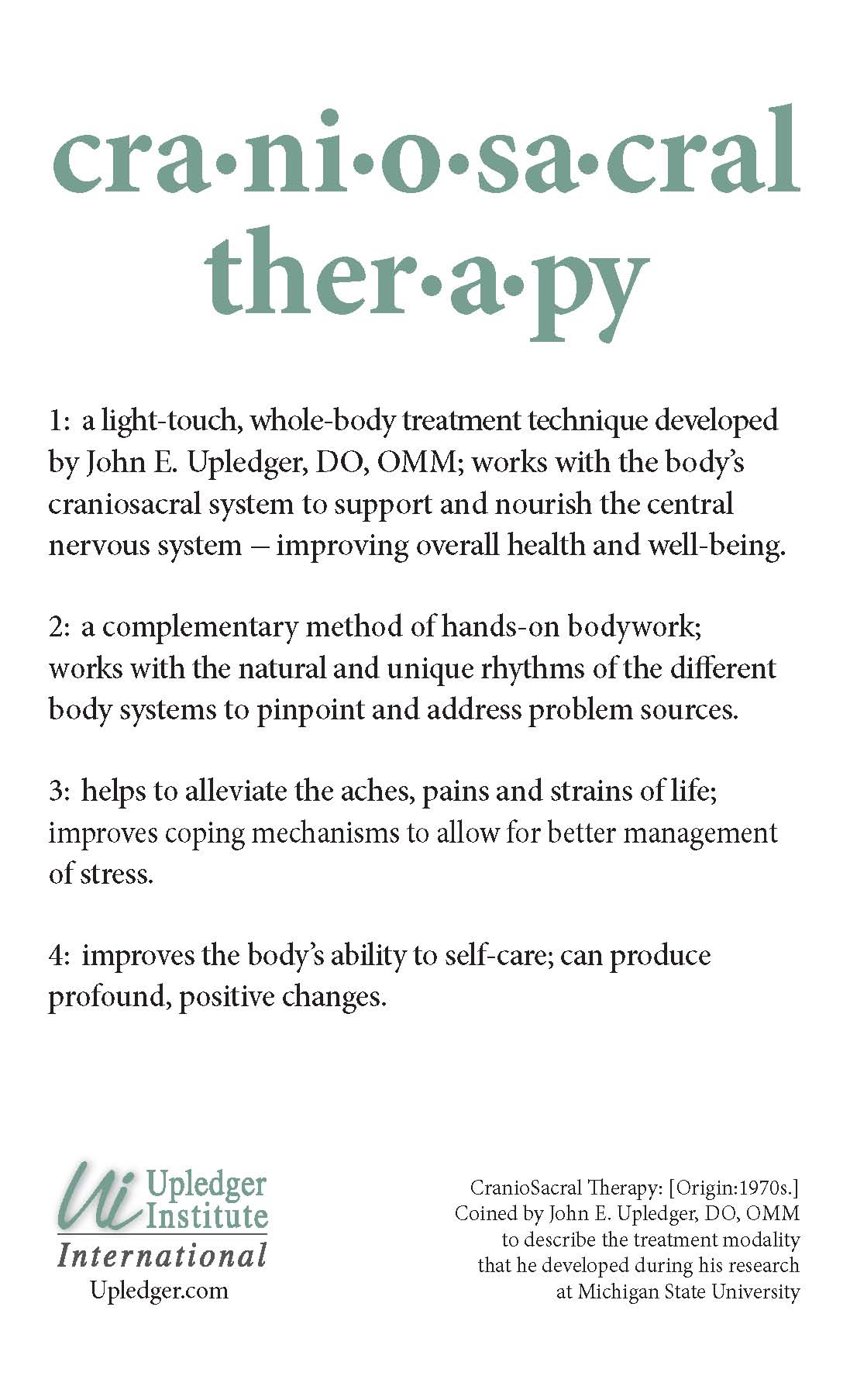
CranioSacral Therapy Definition Poster
Available for free downloading and printing!
- Excellent visual for your clinic,
- Share in your enewsletters for your clients.
- Flyer to pass out.
Share the jpg file on your Facebook page to help spread the word!
Become Certified
Ready to learn about becoming a certified CST practitioner?
Get StartedContact Us
Have questions? Join newsletter?
Contact Us